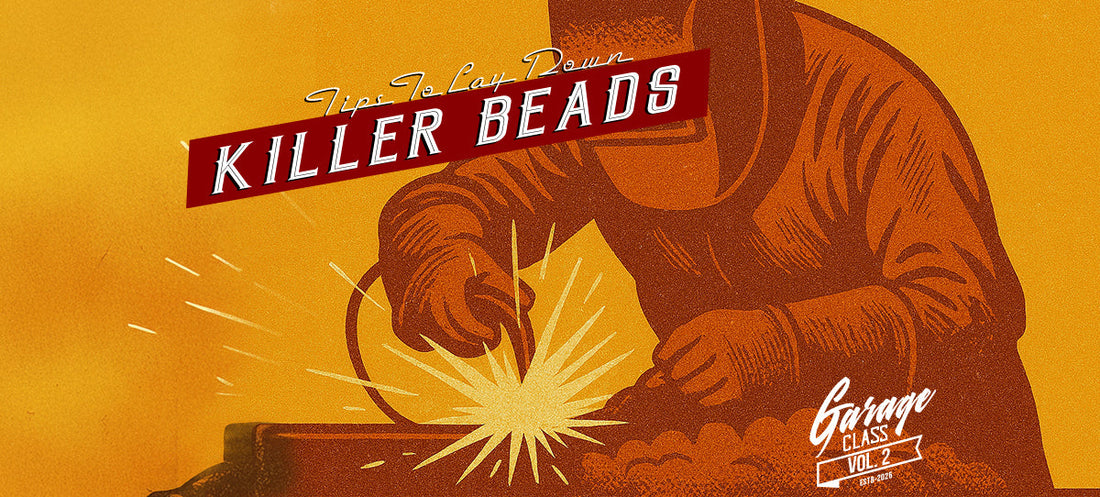5 Tips for Laying Down a Solid Bead

Share
Here at Greasy Hands Society, we know that nothing beats the feeling of a perfect weld bead - you can practically taste the metal and smell the sparks. Whether you’re torching together your first patch panel or putting in the hours on a restoration build, these five shop-tested tips will have you laying down beads so crisp even your grandad will nod in approval.
1. Prep Like a Pro (and Embrace the Grind)
Your weld only ever gets as good as the metal it’s on. Break out the grinder or wire wheel and strip it to bare steel - rust, paint, and oil are like party crashers for your weld pool. Need to chase down that last bit of grease? Hit it with some acetone or a dedicated degreaser. Tight, gap-free fit‑ups aren’t just pretty - they help you control penetration and avoid ugly cold laps.
2. Find Your Rhythm - Travel Speed Is Key
Welding isn’t a race, but neither is it a crawl. Too quick and you’ll end up with a skinny, under‑fused stringer; too slow and you’ll build a lumpy, over‑reinforced mess. Grab some scrap of the same thickness and dial in a steady pace. Imagine you’re “painting” the joint - smooth, even strokes. Keep your eyes on that molten puddle: it should look calm, not frantic or drowning. Once you lock in your groove, your beads will follow suit.
3. Angle for Success
Torch angle isn’t just shop lore - it shapes your entire bead. For MIG and TIG, lean forward slightly (5–15°) to push the puddle and flatten the bead. If you’re running stick, drag back about 10° so you can see and manage penetration. A light side‑to‑side weave will widen your bead when you need it, but resist the urge to over‑rock - it slows you down and wastes wire.
4. Heat It Up (- but Don’t Torch It)
Amp and voltage set your fire. Too much juice? You’re cutting holes. Too little? You’re fighting for fusion. Check your welding chart for your electrode size and material thickness, then tweak as you go. After a test run, break it open or shine a light on the bead’s root - if it’s shy on penetration, bump up the heat or slow down. If you see undercut forming, dial it back or pick up the pace. Jot down your sweet‑spot settings for next time; your future self will thank you.
5. Shield Your Sh*t - Gas Coverage Matters
Porosity is weld kryptonite. For MIG and TIG, run about 20–25 CFH of argon (or your shop’s go‑to mix) and keep your nozzle spatter‑free. Feeling a draft from an open door? That breeze will blow your shield—and your weld quality - right out. Consider a simple wind break or swap your position before you torch up.
Bring It All Together
Welding is equal parts skill, setup, and shop smarts. Keep your metal clean, lock in a smooth travel speed, perfect that torch angle, fine‑tune your heat, and guard your weld with proper gas flow. Put in the reps on scrap, take notes, and share your wins (and fails) with the Greasy Hands crew. Before you know it, every bead you lay will be something you - and your projects - can be proud of.
Now get back in the shop, spark it up, and show that joint who’s boss. Stay greasy!
